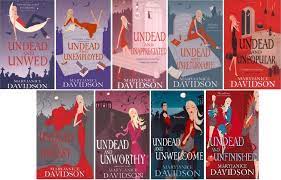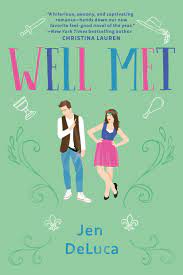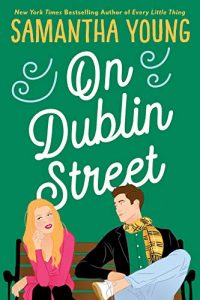The Role of Illustrated Covers in Broadening the Romance Audience
By Jocelynn Murphy (2021)
Introduction
Covers have an especially important role in the marketing of romance novels. Subgenres are easily distinguished from one another through a simple glance at a cover. There have been many different transformations in the appearance of romance book covers, one of the most notable shifts occurred in the late 90s-early 2000s. Interestingly, a more recent shift seems to mimic that one, wherein covers featuring models were largely replaced by illustrated covers. The shift from models on the cover to illustrations first occurred in the late 90s-early 2000s before it appeared again in 2019. Both shifts can be largely attributed to the desire to expand the audience of the romance genre. More specifically, to include readers of women’s fiction. This essay will first explore each shift independently before briefly comparing the two to reveal how both occurred as an attempt to include more readers in the romance genre.
Lates 90s-Early 2000s Shift: The Predecessor
With the late 90s to early 2000s came the introduction of the campy cartoon covers in romance (Irvin, 1999). Rachel Gibson, Elizabeth Bevarly, and MaryJanice Davidson are all examples of novelists across different subgenres of romance whose covers strongly resemble each other and demonstrate this trend. They all feature long-legged cartoon heroines (sometimes) in heels that are placed upon vibrant backgrounds.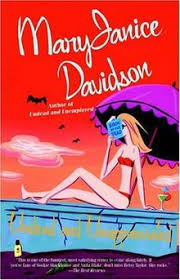
It is important to note that this shift aligns with the birth of the “chick-lit” genre and the journey of its skyrocketing popularity from the mid-1990s into the early 2000s. Chick-lit is a subgenre of Women’s Fiction that “sprang to life in the mid 90s with Helen Fielding’s Bridget Jones’s Diary and Sophie Kinsella’s Diary of a Shopaholic” (Rosenfield, 2019). These novels are known to follow quirky female heroines who are typically on a journey in search of love and self-fulfillment (Community, 2013). They began to quickly garner great success. Bridget Jones’s Diary specifically became a cultural staple, making the USA Today Best Seller’s List in 1999 (USA TODAY, 1999) before being adapted into a movie in 2001(Hale, 2001). The novel’s influence at this moment in history is demonstrated by its standings in a 2020 poll that the Romantic Novelist’s Association carried out to determine the most romantic book in the past sixty years. Fielding’s book was not only voted the most romantic novel of the 1990s, but most romantic book overall from the 1960s-2010s (Shacklock, 2020). This award reveals several key aspects of the novel’s overall impact on the romance genre. First and foremost, Bridget Jones’s Diary is known for birthing chick-lit, a genre that has elements of romance but is not definitively romance due to a valuing of self-discovery over romance in the plot. For a book that is not by definition a romance to win “Most Romantic Novel” over books within the romance genre is an incredible feat. Though the novel itself is not a romance, the magnitude of the impression that the romantic elements has left on the romance community is grand. This point is further validated by the fact that this award was won in 2020, twenty-four years after the book was published, demonstrating that the impact was so large that it was able to be maintained for decades.
The success and reputation of this book led to more chick-lit novels being published, even under Harlequin, a traditionally romance imprint (Chicklitclub, 2007). The novel and film adaptation Bridget Jones’s Diary birthed and expedited the popularity of the chick lit genre with its success creating a well-established genre with expectations that the subsequent novels in the genre followed, the most noticeable of which pertained to the covers. The covers of chick-lit novels are profoundly distinguishable, as they are typically described as overtly feminine with “pastel covers with pictures of shoes” (Osterkamp, 2007).
This trend can be seen i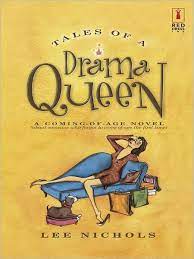 n many chick-lit books from the late 90s and early 2000s such as: City Girl by Sarah Mlynowski (2003), Tales of a Drama Queen by Lee Nichols (2004), The Other Side of the Story by Marian Keyes (2004) and Sophie Kinsella’s ongoing Shopaholic series which was primarily released in the early 2000s. Interestingly, many of these authors were published under Red Branch Ink, a branch of Harlequin that was specifically created to market chick-lit books (Chicklitclub, 2007). This once again explores the close connection between romance and chick-lit at the time, seeing as Harlequin is traditionally a romance publisher.
n many chick-lit books from the late 90s and early 2000s such as: City Girl by Sarah Mlynowski (2003), Tales of a Drama Queen by Lee Nichols (2004), The Other Side of the Story by Marian Keyes (2004) and Sophie Kinsella’s ongoing Shopaholic series which was primarily released in the early 2000s. Interestingly, many of these authors were published under Red Branch Ink, a branch of Harlequin that was specifically created to market chick-lit books (Chicklitclub, 2007). This once again explores the close connection between romance and chick-lit at the time, seeing as Harlequin is traditionally a romance publisher.
Romance covers in this time period look similar to the fast-growing genre of chick-lit. Best-selling author Rachel Gibson’s covers reflect this. Her books Truly Madly Yours, Simply Irresistible, and See Jane Score which were released during the late 90s and early 2000s are heavily reminiscent of chick-lit covers with their pastel pinks and yellows and cartoon heroines in heels. Highly-acclaimed Katie MacAlister also entered the romance scene during this time with books such as her Aisling Grey series as well her standalones Improper English and Blow Me Down. All of these also feature covers with illustrated heroines in heels and pastel blues and yellows. The Undead series by MaryJanice Davidson is an example of paranormal romance covers that follow this pattern, demonstrating that this influence went beyond the contemporary romance genre. However, it seems as though it did not quite reach the historical romance genre at this time. All of the books mentioned were published either during or following the establishment of chick-lit as a genre following the rapid success of Bridget Jones’s Diary and they closely resemble the chick-lit novels that were flourishing alongside them. Taking into account the close connection between Bridget Jones’s Diary and romance as well as the fact that traditional romance publishers such as Harlequin created branches to sell chick-lit, it seems as though these illustrated covers attempted to appeal to the same audience.
MacAlister also entered the romance scene during this time with books such as her Aisling Grey series as well her standalones Improper English and Blow Me Down. All of these also feature covers with illustrated heroines in heels and pastel blues and yellows. The Undead series by MaryJanice Davidson is an example of paranormal romance covers that follow this pattern, demonstrating that this influence went beyond the contemporary romance genre. However, it seems as though it did not quite reach the historical romance genre at this time. All of the books mentioned were published either during or following the establishment of chick-lit as a genre following the rapid success of Bridget Jones’s Diary and they closely resemble the chick-lit novels that were flourishing alongside them. Taking into account the close connection between Bridget Jones’s Diary and romance as well as the fact that traditional romance publishers such as Harlequin created branches to sell chick-lit, it seems as though these illustrated covers attempted to appeal to the same audience.
2019 Shift: The Return of the Rom-Com
A similar shift occurred in 2019 which is best visualized through a look at the Best Romance Goodreads Choice Award. The first appearance of a book featuring an illustrated cover in the Best Romance Goodreads Choice Awards was in 2016 with The Hating Game by Sally Thorne (Goodreads, 2016). The years of 2016 and 2017 both featured one illustrated cover out of the twenty nominees (Goodreads, 2017). Three out of twenty nominees featured illustrated couples with a vibrant background in 2019 (Goodreads, 2019). Illustrated covers gradually gained popularity until in 2019, nearly 50% of the covers in the Best Romance category featured illustrated couples, indicating a major shift. Nine out of the twenty featured nominees possessed vibrant covers with illustrated protagonists in the Best Romance of 2019. A few included:Red, White & Royal Blue by Casey McQuiston, The Bride Test by Helen Hoang, Well Met by Jen DeLuca, and The Wedding Party by Jasmine Guillory (Goodreads, 2019).In 2020, over half of the nominees fit this trend whereas only three books featured models on the cover. A few of the books that were featured this year included: You Had Me at Hola by Alexis Daria, Party of Two by Jasmine Guillory, Something to Talk About by Meryl Wilsner, and You Deserve Each Other by Sarah Hogle (Goodreads, 2020).

Many book bloggers have noticed this sudden trend in romance covers and begun theorizing about why it occurred. Journalist Elena Nicolauo wrote an article about how illustrated romance covers are “tricking people into reading romance.” She identifies three crucial elements that illustrated covers share, one of which being that plot wise, they are “novelized takes on cinematic rom-com” with a particular focus on the banter between the protagonists. The cover is said to be a reflection of this content, as it is sheathed in “contemporary designs” rather than existing as “chunky, mass-market formats with images of a man clutching a woman” (Nicolaou, 2018). This theory regarding the connection between illustrated covers and rom-com plot elements is further validated by the historical romance genre now joining the trend. In an interview with Frolic, historical romance connoisseur Tessa Dare discusses the 2020 reprinting of her book Romancing the Duke to feature an illustrated couple on the cover. She describes the repackaging of the contents of the book with the sentence “the historical romance subgenre offers lots of romcoms, too” (Frolic,2020). This further demonstrates that the illustrated romance cover has come to reflect a plot that possesses rom-com elements. This is heavily related to the chick lit genre as the books are similar to rom-coms except the romance is a subplot. Annika Klein of the Book Riot explores this in her blog post, stating that the covers “look like chick lit novels of 10-15 years ago” which has led to confusion in readers when they get into the book and explicit sex scenes are featured (2019). This confusion reflects the way in which the covers are pulling in readers who are not necessarily expecting the romance that they are ultimately given.
The blog She Reads Romance Books examines how this new audience could be chick-lit readers. Lisa gives several examples of authors who have shifted towards an illustrated cover design including Penny Reid, Helena Hunting, and Samantha Young. A few of these authors have gone as far as to make alternate covers of their previous work to include an illustrated couple on the cover such as Samantha Young’s On Dublin Street. Lisa references chick lit as a contributing factor to the trend. She explains that she initially categorized the books as chick lit after seeing the cover because of how different they are from other romance book covers. She attributes this to authors wanting to expand their audience to include “chick lit lovers as well” (Leslie, 2020).
An interview of an author that has made this shift herself proves that the blog posts’ theory may be warranted. Best-selling author Roni Loren interviewed about her new “eye-catching” illustrated cover at Entertainment Weekly. When answering why she made the switch to illustrated covers, she responds “I wanted to get readers who maybe wouldn’t necessarily pick up a mass-market couples’ cover book…because I think there’s a lot of people who are romance readers out there who don’t realize [it].” This indicates that at least one author that has participated in this trend believes that these covers are a way to broaden the romance audience by toning down romance covers to make them appeal to readers outside of the romance genre. Loren further connects this to chick-lit by explaining how the content of the book played a role in her choice to use an illustrated cover. She says, “I feel like this series, in particular, leans toward women’s fiction, even though it’s totally contemporary romance” (Lenker, 2020). This once again connects the 2019 shift towards illustrated covers to the chick-lit genre and its audience.
The covers seem to be expanding the audience of romance not only to include chick-lit lovers, but younger readers as well. Klein also touches on this in her blog post, citing the way in which Red, White, & Royal Blue by Casey McQuiston is “being mistaken for young adult” (2019). This could be due to the fact that young adult novels featured illustrated protagonists on the cover before the trend in romance came about again, as demonstrated by the Best of Young Adult Fiction and Fantasy Goodreads Choice Awards in 2015 and 2016 (Goodreads, 2016).
Comparison of the Shifts
Illustrated covers seem to be heavily connected to chick-lit, so much so that book bloggers connected romance books to the genre in both moments of history when the covers shifted away from models and towards vibrant cartoons. While the first shift that occurred in the late 90s-early 2000s is largely connected to the birth and fast-growing popularity of the genre in the wake of Bridget Jones’s Diary’s rapid success following both the novel and film adaptation, the second shift pays tribute to chick-lit a bit differently. These covers seem to have originated from the resurgence of the popularity of the romantic comedy. This shift slightly deviates from its predecessor despite the role of film in both due to the fact that the first shift is heavily dependent on the surge of rapid-growing success that came with the birth of the chick-lit genre. There doesn’t seem to be a defining moment like this in the second shift. Instead, the focus seems to be on the plots of the books themselves. However, both shifts seem to have occurred as a way to broaden the audience of those who read romance.
In the first shift, illustrated covers shifted in tandem with the flourishment of chick-lit novels. Romance imprints like Harlequin even added branches that specifically sold chick-lit, indicating an acknowledgement of the genre’s influence on the market. This paired with extreme distinguishability of a chick-lit cover seems to allude to the idea that the romance community was attempting to tap into the market. The second shift appears to indicate the same. Book bloggers and authors alike detail the potential for illustrated book covers to appeal to an audience who may not be intrigued by the typical romance cover.
Conclusion
Book covers are a fundamental part in interacting with an audience in the romance genre. Readers can identify the subgenres with a glance. While this is a positive for maintaining a relationship with established romance lovers, it can also make it harder to pull in an audience that does not typically enjoy the genre. The shift to illustrated covers in both moments of history reveal a way in which the romance industry has acknowledged and combatted this drawback, leading to a broader conversation centered around a cover’s role in marketing in the romance genre.
Other Related Blog Posts on Unsuitable
https://sites.duke.edu/unsuitable/book-covers/
Bibliography
Best Romance .” Goodreads. Goodreads Choice Awards 2019. Accessed March 21, 2021. https://www.goodreads.com/choiceawards/best-romance-books-2019.
Best Romance .” Goodreads. Goodreads Choice Awards 2018. Accessed March 21, 2021. https://www.goodreads.com/choiceawards/best-romance-books-2018
Best Romance .” Goodreads. Goodreads Choice Awards 2017. Accessed March 21, 2021. https://www.goodreads.com/choiceawards/best-romance-books-2017
Best Romance .” Goodreads. Goodreads Choice Awards 2016. Accessed March 21, 2021. https://www.goodreads.com/choiceawards/best-romance-books-2016
“Best seller list.” USA TODAY (Arlington, VA), August 10, 1999: ARC. NewsBank: America’s News – Historical and Current. https://infoweb.newsbank.com/apps/news/document-view?p=AMNEWS&docref=news/127D893B1543E4B8.
“Chicklit Club’s Chick Lit’s Top 10 Defining Moments of the Noughties.” Chicklitclub, 2007. https://www.chicklitclub.com/noughtiesdefiningmoments.html.
Community. “What Is Chick Lit?” BOOK RIOT, February 11, 2013. https://bookriot.com/what-is-chick-lit/.
Frolic. “Why Tessa Dare Went Illustrated.” Frolic, February 18, 2020. https://frolic.media/why-tessa-dare-went-illustrated/.
Hale, Ellen. USA Today. Gannett Satellite Information Network, April 12, 2001. http://usatoday30.usatoday.com/life/movies/2001-04-12-bridget-jones-brit-appeal.htm.
Irvin, Carol. “Why Don’t They Just Call It Fiction? An Attempt to Differentiate Contemporary Romance & Women’s Fiction.” All About Romance, June 23, 2017. https://allaboutromance.com/covers-covered-by-carol-9/.
Klein, Annika Barranti. “Trending: Illustrated Romance Covers, Romcoms.” BOOK RIOT, August 29, 2019. https://bookriot.com/illustrated-rom-com-covers/.
Lenker, Maureen. “Romance Author Roni Loren on the ‘Eye-Catching’ Illustrated Cover Trend (plus Her New Cover!).” EW.com. EW, June 30, 2020. https://ew.com/books/romance-author-roni-loren-eye-catching-illustrated-cover-trend-plus-new-cover/.
Leslie. “Romance Book Covers – Are They Creating a New Design Trend With Cover Art?” She Reads Romance Books. She Reads Romance Books, January 16, 2020. https://www.shereadsromancebooks.com/blogging-tips-talk/romance-book-covers.
Nicolaou, Elena. “How These Instagrammable Book Covers Are Tricking People Into Reading Romance.” Refinery29, October 11, 2018. https://www.refinery29.com/en-us/2018/10/213494/romance-novel-cover-trend-modern.
Osterkamp, Laurel. “Chick Lit: Which Comes First, The Chick Or The Lit?” Chick Lit Chicks Forum , 2007. https://www.streetdirectory.com/travel_guide/193041/book_review/chick_lit_which_comes_first_the_chick_or_the_lit.html.
Rosenfeld, Lucinda. “What Was Chick Lit? A Brief History From the Inside.” Literary Hub, April 15, 2019. https://lithub.com/what-was-chick-lit-a-brief-history-from-the-inside/.
Shacklock, Emma. “Bridget Jones’s Diary Is the Most Popular Romantic Book of the Last 60 Years Say the Romantic Novelists’ Association.” Woman and Home Magazine. Woman & Home, December 2, 2020. https://www.womanandhome.com/us/life/books/bridget-joness-diary-is-the-most-romantic-book-of-the-last-60-years-say-the-romantic-novelists-association/.
